Corrupt Life? No.2: Elihu Yale
What is a ‘conflict of interest’? How can it be recognised, both by those experiencing it and the government or public whose interest may be being infringed? And how do companies prevent conflicts of interest, especially if their agents are operating far away from the scrutinising eyes of the company bosses? How do those lower down the hierarchy, who have some authority to restrain misbehaviour, prevent it when they are disempowered and bullied by the person immediately superior to them? Is it possible to distinguish between competing claims, when two sides of a dispute both accuse each other of corruption? And what should we do with cultural institutions with ties to corrupt individuals – is this a ‘crime’, like slavery, that merits ‘cancellation’ or one that has to be seen in the context of different norms and standards?
These are some of the questions raised by the life of Elihu Yale (1649-1721), after whom Yale University is named. Towards the end of his life he made a bequest to a struggling, dissenting college in Newhaven, a colony which his family had helped to found, in return for which it was renamed to honour his ‘munificence’.
Yale was indeed born in America; but he lived most of his childhood in London which he left as a young man to make his fortune in India, where he rose in the East India Company [EIC] to become Governor and President of Madras (modern Chennai). Madras had access to the Golconda diamond mines ‘where there are, many times, good bargains to be made, and money got by our Governors’, according to one traveller’s account. Yale certainly traded in diamonds and became very wealthy through them and other goods. He is said to have made £200,000 (equivalent to about £2m today) and the sale of his amassed pictures (over 5000 of them, including a Rembrandt), jewels, watches, several hundred snuff-boxes, 116 pairs of cuff-links, many books, and a range of furniture took no fewer than thirty auction sales. How much of this unusually large fortune was legitimately acquired was disputed even in his own lifetime. An inscription on his tomb describes him as having done ‘much good, some ill’, adding optimistically ‘so hope all’s even’. This blog seeks to explore whether all was even. The story involves allegations of ‘vast, ill-gotten treasure’, a bitterly divided group of officials, and even suggestions of attempted murder.

A portrait of Yale (centre), by John Verelst, with his son-in-laws Dudley North (right) and James Lord Cavendishtogether with David Yale and a young black ‘servant’ with a metal collar and padlock: courtesy of Yale University Art Gallery (via Wikipedia)
Much of the discussion about Yale has focused, for understandable reasons, on the claim that he owned slaves or encouraged the slave trade in India and the links in the ‘further reading’ explore this. The focus of what follows is nevertheless on how Yale acquired his wealth and exercised his power in the EIC, which he joined in 1670. In 1681 he became a member of the Council at Madras, one of the company’s administrative bases, and rose steadily through the ranks until in 1687 he became Governor and ‘President’. He also oversaw its incorporation as a self-governing town with its own mayor, aldermen and burgesses, and its own legal court. Madras was becoming, as an EIC document claimed, a mini ‘Sovereign State in India’. As Governor, Yale thought he had largely unrestrained ‘absolute’ power. Although there was a Council to help manage the Company affairs (and this was to be the source of much conflict), the governor had extensive military, religious, and legal powers that could be exercised somewhat arbitrarily: Yale allegedly hung his groom ‘for riding two or three days’ journey off to take the air’.
Accusations and Counter-accusations of corruption
In 1690 and 1691 Yale fell out with the Council, whose members accused him of corruption. He was said to have made Madras ‘miserable’ by his ‘Oppression and Avarice’. Abusing the Company’s recent relaxation of its earlier ban on its servants pursuing their own trading interests, the councillors claimed that he had ‘gotten a vast Treasure at the loss of thrice as much to the Company whose Enemies have ever had his favour and Protection while their honest Servants have been discountenanced and ruined by him’. His heart and soul were ‘bent agst the Company’s Interest’ and he had taken company goods for his own ‘Profitt’. He ‘studys nothing but self Int[eres]t & private gaine’, they claimed. He applied his ‘great Knowledge and Experience’ to ‘ye Company’s Damage and his own profit’. He extorted money from the ‘Black [ie Indian] Merchants’ (using two or three ‘black servants’ as ‘petty Governors’ to oppress them) but they dared not complain against him. He lowered the morals of junior East India Company men, encouraging their ‘Pride, Idleness, Disrespect to their Superiors & Debauchery; and the last thereof by his owne Example’ (he had two mistresses, and at least one illegitimate child). He laboured ‘to prepossess the Company at Home with false Storys to discredit’ the councillors who opposed him; and he harboured his brother, Thomas, from prosecution for his ‘dishonesty’ and ‘Notorious, faithflessness, Corruptions’ – the councillors thought Thomas owed the Company at least 10,000 pagodas (about £3500 in C17th terms, over £400,000 now). When they threatened prosecution, the governor raged ‘like a mad man’ and physically threatened them. Yale had, they said, doctored accounts and habitually written ‘things as contrary to truth as black is to white’. Yale’s avarice would destroy the company interests on the Coromandel coast and they claimed he even planned a military coup to seize power in Madras. The councillors thought that Yale sought to ‘blacken & discredit’ them but declared ‘in the presence of the Omniscient God & as we shall answer at ye great tribunal, [tha]t what we have writ your Honours is of oure owne knowledge or what hath been assured us by most substantiall men, & what we really believe’. They wanted an independent judge sent out to arbitrate, but one who would resist Yale’s bribes.

detail, Herman Moll, "A Map of the East Indies" (ca. 1715)
Norman B. Leventhal Map Center – Public Domain License via Creative Commons. ‘Black Town’ is marked on the map in the bottom centre
Yale, in turn accused the councillors of corruption, incompetence and obstruction of good governance. He remonstrated against their unjust ‘reflections and affronting oppositions’; claimed that his enemies had been intimidating witnesses into making statements against his brother; and that those who aided them were ‘corrupt, prejudict and littigious’. Yale sought to vindicate himself so that the ‘world may judge betwixt me and you’. The governor stoutly defended his brother, whose arrest was ‘violent injustice’, and said that the councillors’ ‘abusive, malicious and senceless’ cavils at his proceedings had weakened his desire to meet with them. Even so, he said, he had no desire to exercise sole authority, as they had suggested: it was the councillors who seemed ‘rather encline to a Separation’ from him than he from them. He refuted their suggestion that he had used company money for his own purposes ‘which the Allmighty knowes is as false as he is True’ and offered to show them the monthly accounts. By contrast, he said, his critics had ‘irregular’ accounts. If he had used ‘ill language’ it was only to call them ‘ignorant’ and as a result of his being ‘bearded and affronted with huffing Language’ from them. He hoped they did not intend ‘Rebellion or the seeking my life and estate, which, if you doe,’ he warned them, ‘will cost you deer’. Yale could not resist boasting that in his twenty years’ service of the company he had traded more than 500,000 pagodas of goods [£170-200,000], something he thought had aroused their jealousy. He regarded his own actions as having been ‘just and honourable’.
It was difficult for the directors of the EIC, back in London, to know what to make of all this. Sir John Child (the EIC’s chief governor in India) is reported to have said that Yale was surrounded by ‘bad people’ who spoke ill of him, and that the ‘scandalous’ reports were not believed by the Company bosses. Yet government at Madras had clearly become divided to the point of disfunction. The EIC therefore replaced Yale as governor, asking him to stay in India until the charges against him had been cleared.
His removal unleashed a spate of prosecutions. In December 1692 the Council received information that Katherine Nicks – Yale’s mistress and the wife of one of his side-kicks - had committed ‘severall notorious frauds’ at Conimere whilst her husband was chief there: she broke open the company’s warehouse and stole ‘great Quantitys’ of the best cloth which she then ‘applied to Mr Elihu Yale’s Private use’. She was ordered to be arrested. In January 1693 Yale was tried in Madras’s Admiralty Court for ‘wrongs and damages’ done to the Company and judgement went against him, Katherine Nicks, John Nicks and two Indian merchants. Yale was ordered to pay almost 5000 pagodas, and his ship the Diamond was seized in order to secure its payment. Further demands of repayments, and more investigations into payments and seizures made by him when President, were also made. He was accused of having used his position to evade paying customs duties and of threatening corruption allegations against at least one of his enemies in order to extort money from him. Yale’s brother was also imprisoned and prosecuted for embezzlement.
In 1694 Yale protested to the EIC about what he claimed was his ‘unlawful imprisonment’ in India. His enemies, he claimed, had ‘procured Blacks and Infidells to swear … false accusations against’ and had seized £30,000 of his money, five times the sum that even their ‘Arbitrary Court’ had imposed as a fine. He had, he said, been ‘intolerably opprest’ and had suffered a ‘slavish imprisonment’ to stifle his complaints and to ‘bring on him some distemper that may hasten his Death, which not long since by poison was very near Effected.’ But in January 1695 it was his chief surviving critic, Thomas Gray, who feared being poisoned. Gray noted that his fellow critics, Wavell and Cheney, had been ‘strangely rub’d out of the world’ and feared the same fate. In 1697 Yale petitioned the Privy Council in London, again complaining about his treatment, and repeating that there had been attempts to poison him – but the new Governor, Nathaniel Higginson, said Yale ‘would have been hard put to clear his own reputation’ for using poison against his enemies. It was not until 1699, when most of his enemies were dead, that Yale finally set sail for England.
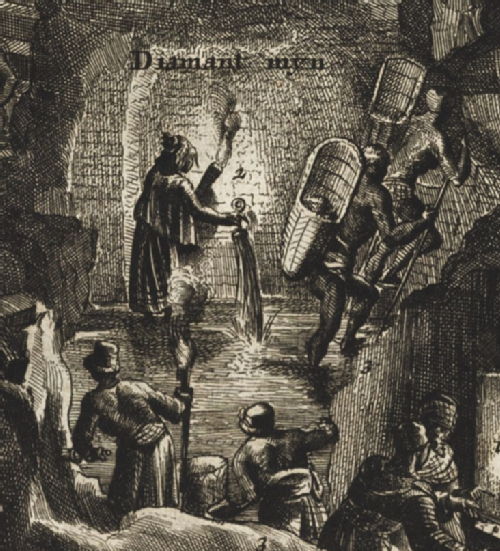
A detail of a print showing the diamond mine at Golconda from 'La galerie agreable du monde (etc.). Tome premier des Indes Orientales.', published by P. van der Aa, Leyden, Leyden, c. 1725
Continuing to trade in Indian diamonds from London, one visitor thought he cared only for his ‘Diamond closet, the repository of his heart and soul’. He was certainly wealthy enough to marry one daughter to James (Lord) Cavendish, the younger brother of the second duke of Devonshire.
What, then, do we make of Yale’s case?
The case shows how corruption cases could be viewed in very different ways. Yale saw himself as a successful merchant who preserved and extended the EIC’s interests, despite the carping of jealous officials who sought to ruin his reputation. It is possible to see him as a successful merchant whose wealth provoked the opposition of men who were equally loose with company money; or, if he was corrupt, that he was simply part of a corrupt culture (governors before and after him were accused of malfeasance) and therefore not particularly culpable. His critics, however, saw him as arrogant, arbitrary, deceitful, mendacious and greedy, pursuing his own interest rather than (and often against) the interest of the Company. Both sides accused the other of corruption – a word that became part of an extended power game. Both sides also felt that the stakes were very high, believing that the other was trying to kill them.
The word ‘self-interest’ appears in the accusations against Yale. ‘Self-Interest’ was a relatively new term. Coined in the late sixteenth century and popularised in the mid-seventeenth century, it had become a useful way of talking about what advantaged anyone. Hence the clash between ‘public’ and ‘private’ interests, and, although the phrase is not used until later, ‘conflicts of interest’. Yale saw the pursuit of his private interest as compatible with his public office; and could point to the fact that the EIC agreed, since it had relaxed its earlier ban on ‘private trade’ by its officials, a reversal that almost guaranteed the types of disputes that revolved around Yale. The company had blurred the boundaries between its interest and that of its servants, seemingly because this led to increased profits and lower costs to shareholders. Some historians have seen the freedom given to private trade as key to the EIC’s ‘success’, since it fostered an economic infrastructure and network on which the company also relied. Clearer boundaries between private and public interests only came a century or so later, though even today they remain problematic distinctions, not least because liberal economics sees the free pursuit of private interest as the key to wealth creation.

An example of a textile from the Coromondel coast in the late C17th: V&A https://collections.vam.ac.uk/item/O121308/fragment-unknown/
Company oversight of Yale was weak. This was almost inevitable, given that letters took many months to travel between London and Madras, and the Directors gave considerable powers to their officials, despite the repeated instances of misbehaviour. There was a council that was in some way a check on Yale; but he did his best to minimise its control, belittle and bully its members, ignore its cautions and refute its allegations. It was only in the late eighteenth and early nineteenth centuries when Parliament, in response to a flood of corruption allegations, introduced regulations on the company and tightened oversight mechanisms. It is difficult to believe that this failure of leadership was not itself the result of vested and private interests. So long as the company made money, there was no real incentive to ask difficult questions about culture and structure. And it valued strong leaders in complex and difficult contexts, even if this meant that they abused their authority.
Abuse of authority had very political overtones in the wake of the revolution of 1688, since James II (friend to the EIC) had been pushed off his throne for his ‘arbitrary’ actions and failure to work with the body of advisers who sat in Parliament. Something similar was at stake in Madras and it produced its own mini-revolution. The abuse of power, whether for financial gain or not, often ends dramatically.
The company lacked independent means of verification so that it had very little means of deciding who was telling the truth. Even the independent official eventually sent to hear the two sides, Sir John Goldsborough, didn’t really get to the bottom of things. For all the mass of paper accumulated by the company, the company’s knowledge was in some ways distinctly limited.
Yale’s personal life was unconventional. Whether his lust for women was part of his lust for power and money is open to debate. Contemporary critics saw his ‘debauchery’ as part of a character flaw that infected others. Today we might see things differently. Catherine Nicks was a fiercely independent woman – a highly unusual female trader who rejected rules governing both her private and business affairs. She may even have been using Yale for advantage – his role certainly protected her and offered opportunities for enrichment - just as much as he used her.
Yale made an unusually large amount of money in ways that were considered by many of his contemporaries to have been corrupt. Yet he was convicted of relatively minor offences, fined a small amount and retained a fortune which he then spent on extravagant display at his house in London. His case was hardly a deterrent to others.
And he used part of his fortune for charitable bequests. The problematic nature of these – and, more broadly, other uses made of corrupt money - need to be acknowledged. Where there is a cultural legacy of corruption, this has to be examined and explained. This applies to houses, estates, objects and even universities. Yale University does not need renaming; but it should be more open about the problematic source of its bequests and perhaps seek to open a dialogue with Chennai and its region.
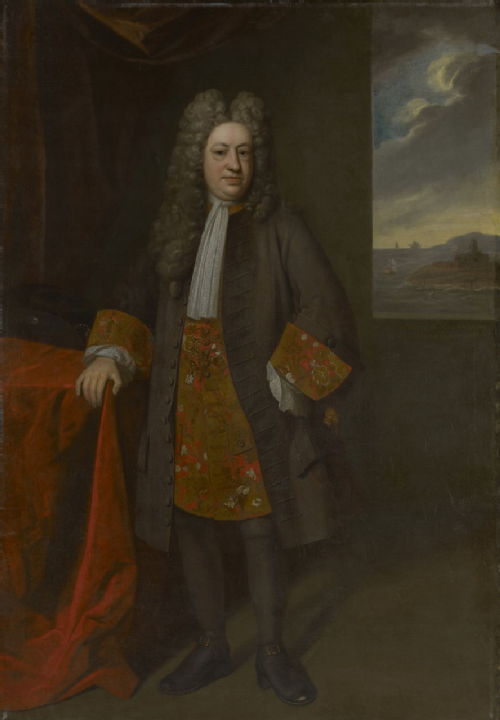
Elihu Yale (1717) by Enoch Seeman, courtesy of Yale University Art Collection and via Wikipedia
Further Reading: Mark Knights, Trust and Distrust: Corruption in Office in Britain and its Empire 1600-1850 (2021); Hiram Bingham, Elihu Yale: the Nabob of Queen Square (1939); Fort St. George, Madras; a short history of our first possession in India : Penny, F. E. (Fanny Emily), d. 1939 : Free Download, Borrow, and Streaming : Internet Archive; Elizabeth Lee Saxe, Fortune’s Tangled Web: Trading Networks of English Entrepreneurs in Eastern India 1657-1717’ Yale PhD 1979; Bodleian Rawl D747, ff.215-21, ‘Abstract of ye Charges’; ibid, ff.234-50; Records of Fort St. George; Diary and Consultation Book of 1690 : India. Madras. Fort St. George Records : Free Download, Borrow, and Streaming : Internet Archive; Records of Fort St. George; Diary and Consultation Book of 1691 : India. Madras. Fort St. George Records : Free Download, Borrow, and Streaming : Internet Archive; H.D Love, Vestiges of Old Madras (1913); BL, IOR/H/36 : 1658-1699 pp. 67-8; Joan Mickelson Gaughan, The 'Incumberances': British Women in India, 1615-1856(Delhi, 2013; online edn, Oxford Academic, 23 Jan. 2014), 78-81.
On Yale and slavery:
New light on the group portrait of Elihu Yale, his family, and an enslaved child | Yale Center for British Art
Elihu Yale | The Yale & Slavery Research Project
"Cancel Yale"? Not likely. - Yale Daily News
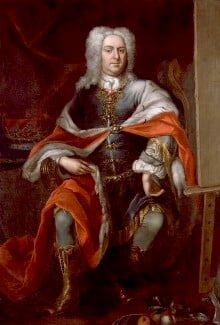
 Mark Knights
Mark Knights

 Please wait - comments are loading
Please wait - comments are loading









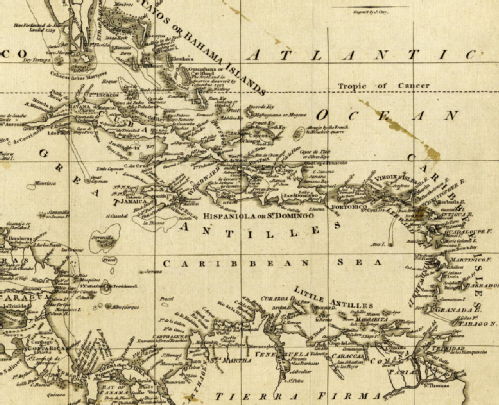
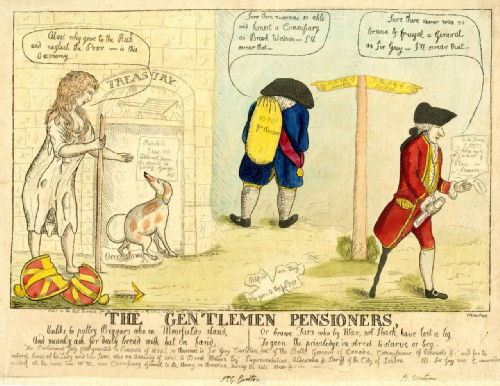
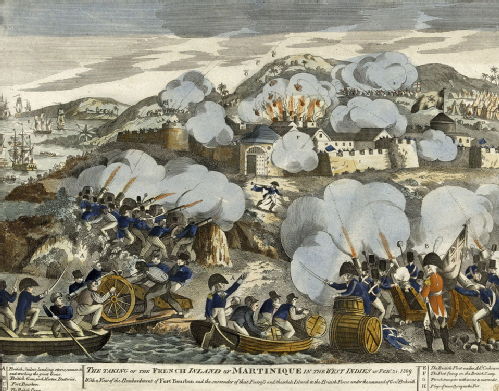
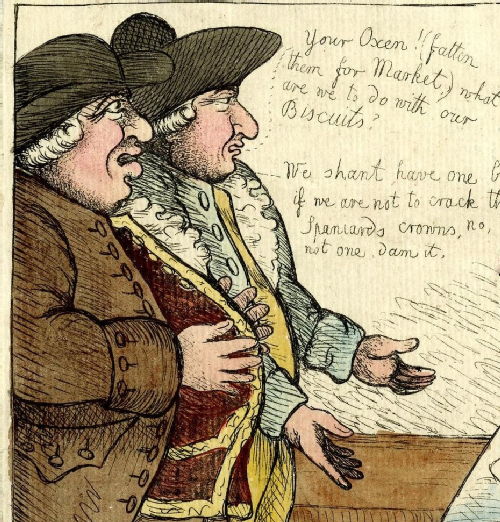
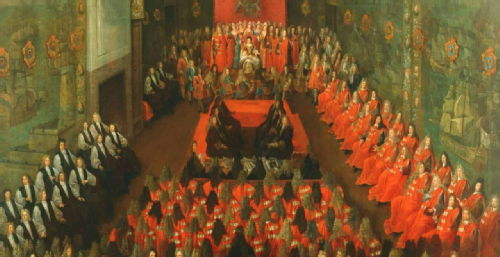
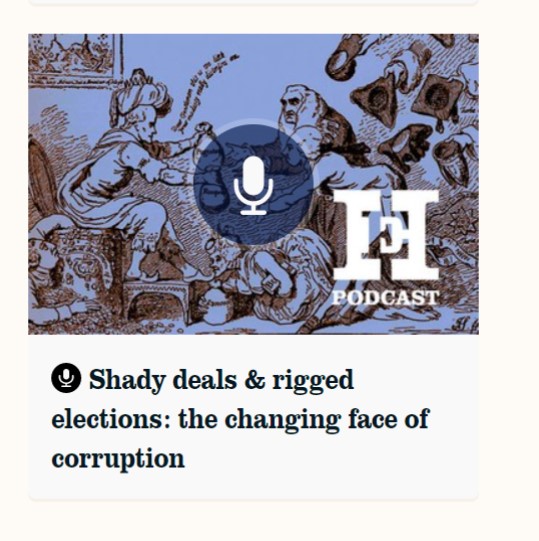

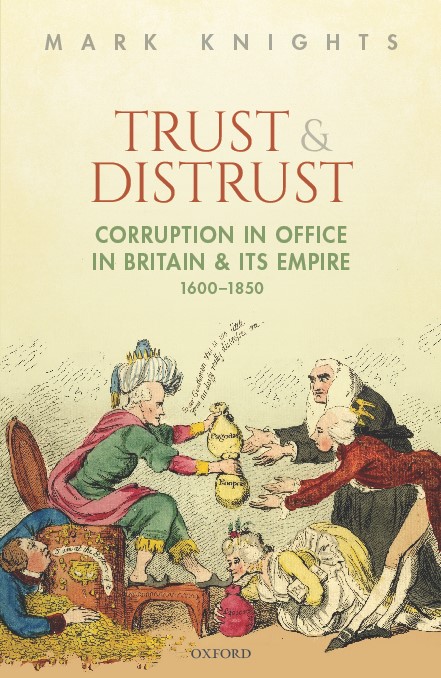
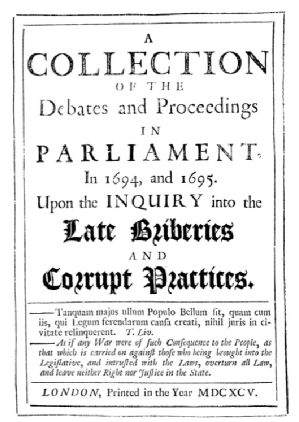
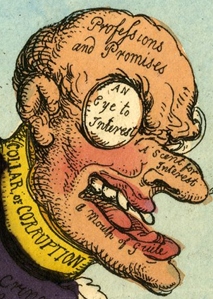
 Loading…
Loading…

